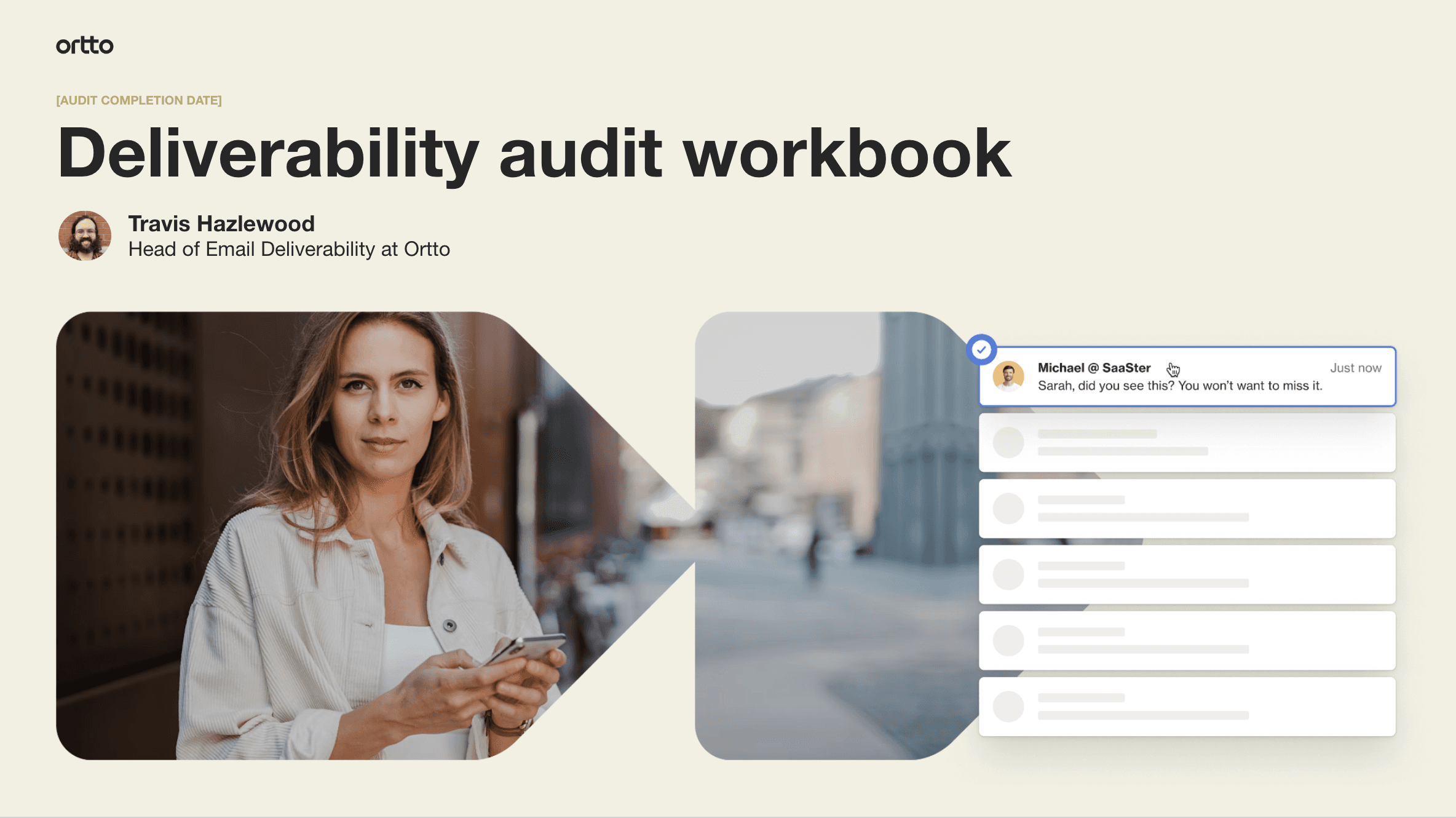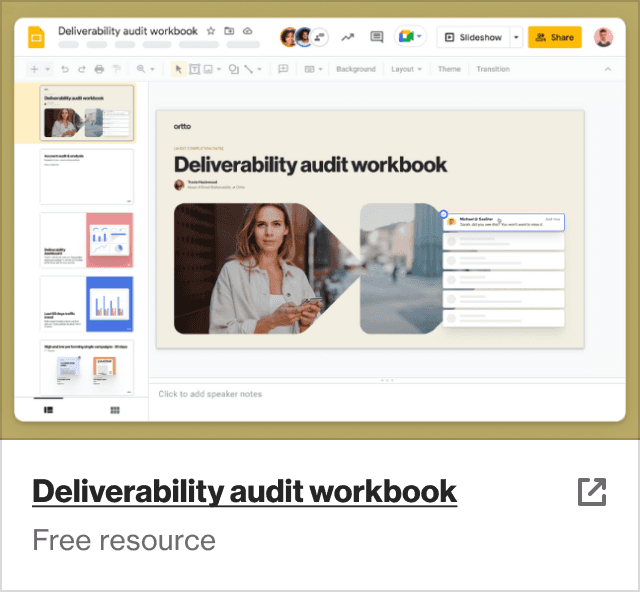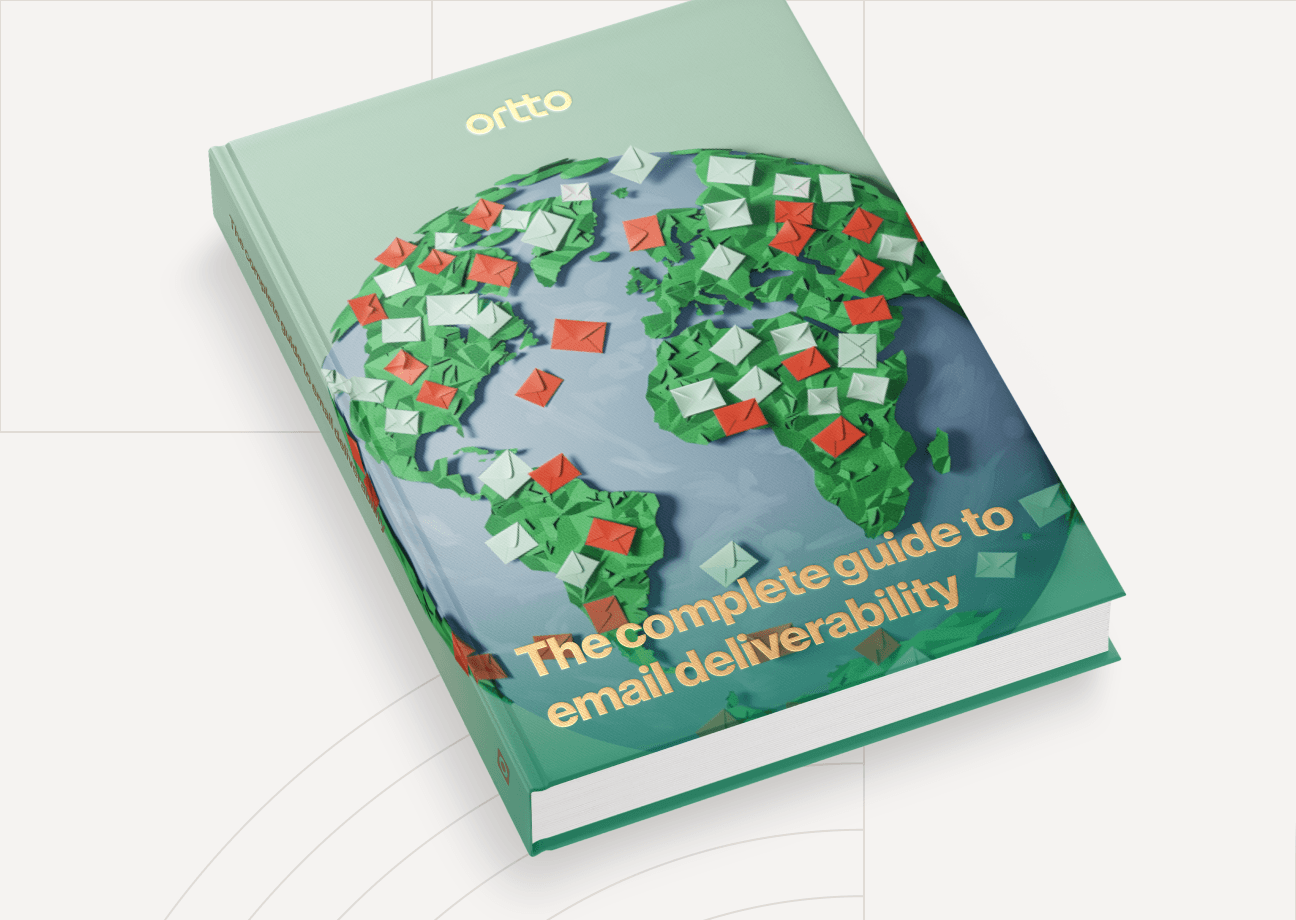As we head towards the post-holiday marketing slump, the most successful businesses will take the time to look back at their busiest season and evaluate email strategies to identify next year’s improvements.
To help you win email marketing in 2023, we’ve built out this Deliverability audit workbook, plus tips for conducting an email performance audit.

Access the workbook here.
So, what needs reviewing?
A lot of pieces come together to create a sender’s email deliverability experience.
Overall, though, these pieces can be broken down into the following categories:
Technical configurations
Is your sending setup following best practices to provide a secure and verifiable delivery experience?
Content and strategies
Are your content and send strategies appropriately engaging with your product and audience types, especially through the conduit of email?
List-health practices
Is your list full of recently engaged subscribers or weighed down with a large amount of old, unengaged recipients?
Marketing tool usage
Are you taking advantage of all available resources in your sending platform or are you missing out on technologies resting at your fingertips?
Each of these four elements should be examined in the coming slower months to identify opportunities to increase and encourage readily available ROI with your marketing efforts.
How to successfully audit your email deliverability
Understanding your email success is about asking the right questions and properly evaluating the answers.
Here are some great starter questions based on the category you are evaluating:
Technical configurations
Am I utilizing Custom Domain authentication to verify my sending domain?
Are all of my signup sources secured for real, interested leads with some sort of CAPTCHA and confirmation process?
Content and strategies
Is my content generalized or personalized in its approach?
Is my send strategy relevant or irrelevant to a subscriber’s current experience with my product?
Are there places where timely automations can replace bulk sends?
What are the differences between my best and worst performing campaigns and automations?
What is the trending experience over time for each of my campaign/automation strategies (rise or fall in positive/negative engagements)?
List-health practices
How many emails have I sent in total in the last 30 days? How many in total are just sitting in mailboxes unopened?
What are the engagement-age proportions (opened email in the last 30, 90, 180, 365 days) of my audience?
Am I seeing an increase in open rates? Click rates?
How often are my bounce rates 5% or higher, unsubscribe rates 1% or higher, complaint rates .1% or higher? (these are signs of problematic audiences)
Do I have a re-engagement process for subscribers who haven’t engaged in over 90 days?
Do I have a suppression process for older, unengaged subscribers from regular content? What about regularly soft bouncing subscribers?
Do I simply send to the entire audience regardless of engagement status?
Do I regularly remove and suppress 12 months+ unengaged subscribers?
Marketing tool usage
Am I regularly evaluating the performance of recent campaigns compared with previous, similar sends (whether similar audience, content, etc.)?
Am I utilizing personalization tools where possible to provide the most optimum and relevant content?
Am I utilizing automation tools where possible to provide this content at its most relevant time?
Am I familiar with the most recent smart feature releases of my platform?
Am I utilizing three different marketing platforms where one could do the job altogether?
Am I utilizing the necessary third-party tools like Google’s Postmaster Tool to keep an eye on the reputation of my sending domain?
Some of the answers are simpler to evaluate with their “yes/no” approach.
Others are more nuanced. The best way to approach the data is to look for trends upwards/downwards and dissect the differences in the data between what came before, what’s being seen now, and what is known to work best in the end. Our Email deliverability dashboard can help you more quickly identify some of these trends.
Conclusion
We know. There are a lot of ways to approach your email practices to identify their strengths and weaknesses, and it can feel overwhelming.
That’s why we’ve simplified this approach with this Deliverability audit workbook so that you can just follow the prompts and find yourself more easily understanding the state of your email practices and where there’s room for improvement. Next month, we’ll explore how this audit can help you implement new strategies to improve your email deliverability in 2023 and beyond.

Author

More by Travis Hazlewood
Travis Hazlewood has no more articles


